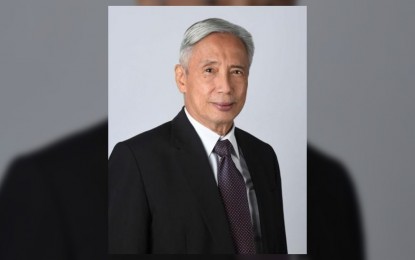
Bangko Sentral ng Pilipinas (BSP) Governor Felipe Medalla (File photo)
MANILA – Bangko Sentral ng Pilipinas (BSP) Governor Felipe Medalla hinted at a possible pause in the central bank’s rate-hiking cycle, citing the deceleration of the domestic inflation rate.
In his presentation during the government’s economic briefing in Washington DC on Wednesday (US time), Medalla said the rate of price increases posted zero expansion from February to March from a 0.3 percent rise in the previous month.
“We think we’re on our way towards our target of 2 (percent) to 4 percent,” he said.
The inflation rate in March slowed down to 7.6 percent on an annual basis from 8.6 percent in the previous month and the 14-year high of 8.7 percent in January.
Average inflation in the first quarter this year stood at 8.3 percent.
The BSP forecast inflation to average 6 percent this year, with the monthly inflation rate decelerating to within-target levels in the last quarter barring any untoward incidents.
For 2024, the BSP’s average inflation forecast is 2.9 percent.
The elevated inflation rate in the country is the primary factor for the total of 425 basis points increase in the central bank’s key rates from May 2022 to March 2023.
“We’re probably pausing in the next meeting because the inflation prints are very good. If April turns to be a very low inflation month, so that’s three good points in a row, we are in the position to pause,” Medalla said.
The next rate-setting meeting of the BSP’s policy-making Monetary Board (MB) is on May 18, the third for the year.
The Philippine Statistics Authority (PSA) is also scheduled to release the April inflation report on May 5.
Meanwhile, Finance Secretary Benjamin Diokno, in his speech, said domestic growth this year is seen to remain resilient, with the assumption of an expansion of between 6 percent and 7 percent, given the continued growth of a favorable demographic profile and a lot of investment opportunities, among others.
Diokno said the lower gross domestic product (GDP) assumption for this year compared to the higher-than-expected 46-year high of 7.6 percent last year, which exceeded the government’s 6.5 percent to 7.5 percent target band, is due to the expected impact of global economic developments.
The growth assumption for this year remains “high but doable,” he said, noting that the government’s fiscal health remains strong, with revenues continuously rising after the pandemic and the reopening of the economy.
For one, Diokno said, infrastructure investments would continue to rise and account for about 5 percent to 6 percent of the economy’s annual output.
“Infrastructure spending is front and center of our growth strategy. We are committed to reverse the decades-long under-investment in infrastructure from 2001 to 2015, where average infrastructure spending is only at 2 percent of GDP,” he said.
He said the situation changed in 2016 when the government introduced the “Build, Build, Build” program, which some said is the golden age of infrastructure in the country.
“For the next six years, we are determined to sustain this high infrastructure investment but with a twist. This time, we will complement government spending with the enhanced public-private partnership mechanism,” he said.
Diokno said this mechanism would greatly boost energy, logistics, transportation, telecommunications, and water infrastructure. (PNA)
